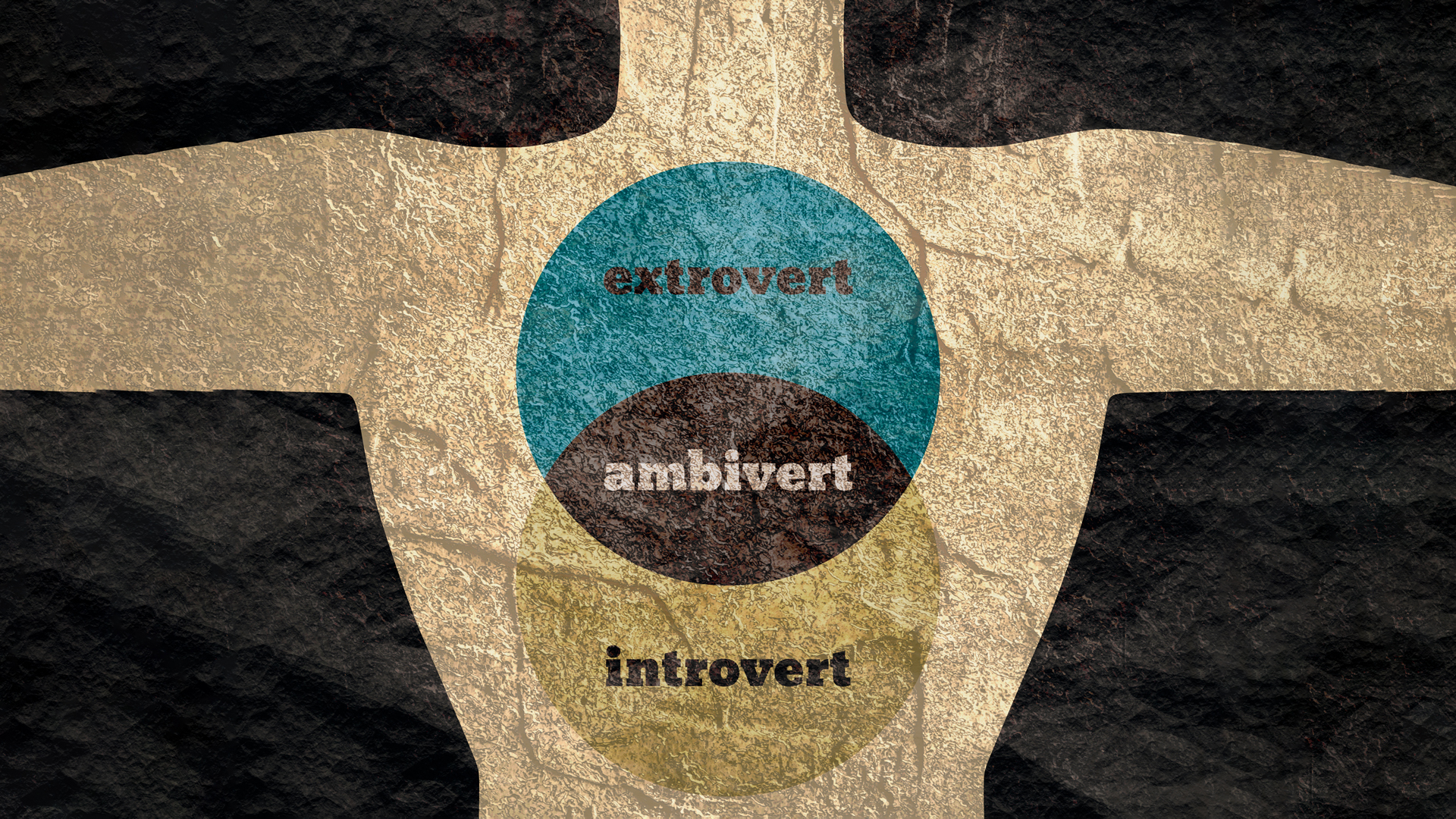Extravert or introvert – what about a hybrid variation? Thom Dennis looks at the characteristics of the ambivert
Some of us have been through psychometric testing and the know of the extraversion to introversion scale, originally conceived by Carl Jung, is one of the most common. But almost none of these profiling tools give a term to those whose preferences bridge the two extremes, that of ambivert. As an ambivert you likely possess a mix of both extraversion and introversion traits which enables you to adapt your behaviour to different situations, and with the demands on leaders to respond to fluctuating and uncertain circumstances, this is a trait which can be highly valued. The question is, can we help people to expand their abilities and preferences to increase ambiversion across our managers and leaders?
A YouGov study found that 50% of Britons consider themselves introverted, with 9% describing themselves as “very introverted.” Men were slightly more likely than women to describe themselves as introverted (53% versus 48%). Among Americans, the largest share (39%) say they are introverts, with 9% who are completely introverted and 29% who are more introverted than extroverted. Another 31% say they’re about an equal mix of both, and 22% consider themselves extroverted: 7% completely so and 15% more extroverted than introverted. Since there is no universally accepted definition of ambiversion, it is difficult to determine the number of ambiverts in the population.
An ambivert’s contribution to the workplace
Ambiverts have the potential to combine the best of extrovert and introvert characteristics. They tend to be known for their flexibility to respond to situations and typically are individuals who adapt to different circumstances, being energised both through socialising and being alone. They know when to listen and when to speak and can use different communication methods effectively.
Individuals can cultivate ambivert skills through practice, learning from introvert and extrovert role models
Extroverts feel energised by socialising, make quick decisions, take risks for success, possess strong communication skills, and build relationships easily. They are characterised for their confidence, charisma, energy, and organisational skills, and enjoy collaborating and leading.
On the other hand, introverts tend to learn through observation, possess strong listening skills, and think before acting or making decisions. They are often creative collaborators, attentive listeners with great attention to detail, and gain energy through spending time alone or in small groups.
The ambivert advantage
Ambiverts, possessing a combination of extroverted and introverted traits, can excel in various fields, including sales, leadership, and negotiation.
Professor of Psychology Adam Grant at University of Pennsylvania produced a study report The Ambivert Advantage in which he described the highly productive and effective contribution that ambiverts can bring to the workplace due to their flexible communication style. They can assertively persuade and close sales while also listening to customers’ interests, avoiding appearing overconfident. Grant developed The Ambiversion Scale to assess an individual’s socialising preferences through 14 statements such as “I like to mix with people, but also need time to myself” and “I’m equally comfortable in quiet and loud environments.” His research refutes the notion that extroverts are more successful, as the worst performers in sales are those who are extremely introverted or extremely extroverted.
Individuals can cultivate ambivert skills through practice, learning from introvert and extrovert role models, and developing social skills, confidence, and assertiveness. However, it’s best to find a balance between socialising, working and taking time to recharge. There is little benefit in exhausting ourselves by trying to master all traits simultaneously.
Ambiverts in extreme situations
During periods of uncertainty and fear, like the pandemic, ambiverts may have been better equipped to balance their need for social interaction with the need for isolation and alone time, as they are comfortable in both settings. The crisis demanded leaders to leverage both extroverted and introverted qualities. On one hand, managers had to display visible enthusiasm to motivate and steer their teams through uncertainty. On the other, they also had to actively listen and solicit feedback to create a flexible and empathetic work environment for their employees.
How to nurture the talents of all personality types
Ensure that your team is diverse in terms of introverts, extroverts, and ambiverts to benefit from good interpersonal communication, creativity, emotional intelligence, and productivity.
Offer flexible work arrangements, such as remote work or flexible schedules, that accommodate the needs of different personality types.
Recognise that visibility is not a measure of productivity or engagement. Aim to bring out the best in all employees, and make sure that everyone has a chance to share and use their preferred communication style. Celebrate the contributions of individuals, regardless of their personality type or communication style.
Embrace cultural intelligence (CQ), because it enables good business decisions and an understanding of how attitudes and beliefs influence them.
Be aware of your biases and avoid assuming that quieter employees have no interest in taking on leadership responsibilities. Provide equal opportunities for everyone to lead and collaborate.
Be mindful of how you reward your employees and ensure that rewards are meaningful and varied, including private conversations, email messages, and public recognition.
Avoid relying solely on team meetings for communication. Provide opportunities for collaboration and open communication, while also respecting the needs of introverts who may prefer to work independently. Allow space for your quieter employees and invite them to share their thoughts in a few days.
Create a variety of workspaces. Offer a range of workspaces, from quiet areas for focus work to more social spaces for collaboration and brainstorming.
Prioritise employees’ well-being. Recognise the importance of mental health and well-being for all employees and provide resources and ensure an inclusive, positive culture that enables everyone to work with flexibility and in a way that suits them. Encourage your people to contribute their ideas, regardless of their communication style or personality type.
Thom Dennis is the CEO of Serenity in Leadership




